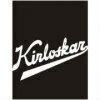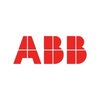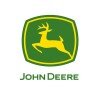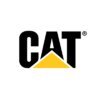
i
Thermax Limited
Filter interviews by
Thermax Limited Safety Supervisor, Safety Officer Interview Questions and Answers
Thermax Limited Safety Supervisor, Safety Officer Interview Experiences
1 interview found
Interview Questionnaire
3 Questions
- Q1. What is hot work?
- Q2. What is line break?
- Ans.
A line break is the intentional opening of a pipe, vessel, or line to release pressure or to allow maintenance work.
Line breaks are done to prevent accidents and injuries caused by pressure build-up.
They are also done to allow maintenance work on the equipment.
Line breaks should only be done by trained personnel and with proper safety measures in place.
Examples of equipment that may require line breaks include pipeline
- Q3. What is work at height
- Ans.
Work at height refers to any task performed at a height where a person could fall and injure themselves.
Work at height includes tasks such as working on a ladder, scaffolding, or a roof
It is important to assess the risks and implement safety measures such as fall protection equipment
Training and supervision are crucial to ensure workers are aware of the risks and safety procedures
Examples of work at height include pain...
Skills evaluated in this interview
Top trending discussions






Interview questions from similar companies

I applied via Approached by Company and was interviewed before Sep 2022. There was 1 interview round.
(2 Questions)
- Q1. Safety issue faced how you solved
- Ans.
Implemented a new safety training program to address frequent slip and fall incidents in the workplace.
Conducted a thorough analysis of past incidents to identify common causes
Collaborated with the HR department to develop a comprehensive safety training curriculum
Implemented regular safety drills and hands-on training sessions for employees
Monitored and evaluated the effectiveness of the new program through incident r...
- Q2. Scaffolding supervison procedure.work permit procedure
- Ans.
Scaffolding supervision and work permit procedures are essential for ensuring safety on construction sites.
Scaffolding supervision involves regular inspections to ensure stability and safety
Workers must be trained on proper assembly and use of scaffolding
Work permit procedures involve obtaining permission before starting work on scaffolding
Permits should outline specific safety measures and precautions to be followed
Re...
Interview Preparation Tips

Safety Officer Interview Questions & Answers
Expertise Contracting Companyposted on 1 Dec 2021
Interview Questionnaire
15 Questions
- Q1. What is confined space?
- Ans.
Confined space refers to an enclosed or partially enclosed area with limited access and ventilation.
Confined spaces are typically small and have restricted entry and exit points.
They may have limited airflow and may contain hazardous substances or conditions.
Examples of confined spaces include storage tanks, tunnels, sewers, and crawl spaces.
Workers entering confined spaces must follow strict safety protocols and use a...
- Q2. How many types of work permit?
- Ans.
There are several types of work permits that vary depending on the nature of the work being performed.
Different types of work permits include hot work permits, confined space permits, electrical work permits, and excavation permits.
Each type of work permit is specific to the hazards and risks associated with the particular work being carried out.
For example, a hot work permit is required for any work involving open fla...
- Q3. What is safety?
- Ans.
Safety is the state of being protected from harm, danger, or risk.
Safety refers to the measures taken to prevent accidents, injuries, or illnesses.
It involves identifying and assessing potential hazards and implementing controls to minimize or eliminate risks.
Safety includes promoting awareness, training, and adherence to safety protocols and procedures.
Examples of safety measures include wearing personal protective eq...
- Q4. What is hazard?
- Ans.
A hazard is a potential source of harm or danger that can cause injury, illness, or damage to property.
A hazard is any condition, substance, or activity that has the potential to cause harm.
Hazards can be physical, chemical, biological, ergonomic, or psychosocial in nature.
Examples of hazards include slippery floors, toxic chemicals, infectious diseases, repetitive motion injuries, and workplace stress.
Identifying and ...
- Q5. Give me some example of confined space?
- Ans.
Confined spaces are areas with limited entry and exit points, and are not designed for continuous occupancy.
Tanks
Silos
Vats
Boilers
Sewers
Tunnels
Pipelines
Storage bins
Pits
Crawl spaces
- Q6. Hazardous job in confined space
- Ans.
Working in a confined space poses significant hazards that require proper safety measures.
Identify and assess potential hazards in the confined space
Implement proper ventilation and air quality monitoring
Ensure proper training and equipment for workers
Establish effective communication and emergency procedures
Regularly inspect and maintain the confined space
Examples: working in underground tunnels, storage tanks, or sew
- Q7. What is Lotto?
- Ans.
Lotto is a form of gambling where players select a set of numbers in the hope of matching them with the numbers drawn in a lottery.
Lotto is a popular game of chance played worldwide.
Players choose a set of numbers and purchase a ticket.
A random drawing of numbers takes place, and if the player's numbers match, they win a prize.
Lotto can have different variations, such as Powerball or Mega Millions.
It is important to pl
- Q8. What isToolbox talk?
- Ans.
Toolbox talk is a short safety meeting held to discuss specific safety topics and address any concerns or issues related to the workplace.
Toolbox talk is a common practice in industries to promote safety awareness and prevent accidents.
It is usually a brief meeting conducted at the worksite before starting the day's work.
The purpose of a toolbox talk is to educate employees about potential hazards, safe work practices,...
- Q9. What is accident?
- Ans.
An accident is an unplanned event that results in injury, damage, or loss.
Accidents are unexpected and unintentional incidents.
They can occur in various settings such as workplaces, roads, or homes.
Accidents can cause physical harm, property damage, or financial loss.
Examples include car crashes, slips and falls, chemical spills, and electrical shocks.
- Q10. What is risk assessment?
- Ans.
Risk assessment is the process of identifying, evaluating, and prioritizing potential risks to determine appropriate control measures.
Risk assessment involves identifying hazards and their potential consequences.
It evaluates the likelihood and severity of each risk.
Control measures are then implemented to reduce or eliminate the identified risks.
Examples include conducting a fire risk assessment in a building, assessin...
- Q11. What is risk assessment
- Ans.
Risk assessment is the process of identifying, evaluating, and prioritizing potential risks to determine appropriate control measures.
Risk assessment involves identifying hazards and their potential consequences.
It evaluates the likelihood and severity of each risk.
The process helps in determining the level of risk and prioritizing actions to mitigate or eliminate the risks.
Examples of risk assessment include assessing...
- Q12. What is work permit
- Ans.
A work permit is a document that authorizes a person to perform a specific job or task in a controlled or hazardous environment.
A work permit is typically issued by a safety officer or supervisor.
It outlines the necessary precautions and safety measures to be taken before, during, and after the job.
Work permits are used to ensure that all necessary safety procedures are followed and that the work is carried out safely.
...
- Q13. What is Jsa and it is used
- Ans.
JSA stands for Job Safety Analysis. It is a systematic process used to identify and mitigate potential hazards in a specific job or task.
JSA is used to break down a job or task into individual steps and identify potential hazards associated with each step.
It involves observing the job being performed, identifying potential hazards, and determining the appropriate control measures to prevent accidents or injuries.
JSA he...
- Q14. What are the hazard in a confined space
- Ans.
Hazardous conditions in confined spaces pose risks to workers' health and safety.
Lack of oxygen or presence of toxic gases
Fire and explosion hazards
Engulfment or entrapment
Physical hazards like falling objects or limited mobility
Temperature extremes or poor ventilation
Chemical exposure or hazardous substances
Electrical hazards
Structural collapse or unstable conditions
- Q15. What is personal protective equipment
- Ans.
Personal protective equipment (PPE) refers to protective clothing, helmets, goggles, or other garments or equipment designed to protect the wearer's body from injury or infection.
PPE includes items such as gloves, masks, safety glasses, helmets, and protective clothing.
It is used to minimize exposure to hazards that can cause injury or illness.
PPE should be selected based on the specific hazards present in the workplac...
Interview Preparation Tips

Safety Engineer Interview Questions & Answers
Expertise Contracting Companyposted on 29 Jul 2021
Interview Questionnaire
1 Question
- Q1. How many safety device in grinding machine?
- Ans.
The number of safety devices in a grinding machine varies depending on the specific machine and its design.
Safety devices in grinding machines are designed to protect operators from potential hazards.
Common safety devices include emergency stop buttons, interlocks, guards, and protective shields.
The number and type of safety devices depend on the machine's complexity and the level of risk involved.
For example, a simple...
Thermax Limited Interview FAQs
Tell us how to improve this page.
Thermax Limited Interviews By Designations
- Thermax Limited Control Room Engineer Interview Questions
- Thermax Limited Safety Officer Interview Questions
- Thermax Limited Territory Sales Manager Interview Questions
- Thermax Limited Electrical Engineer Interview Questions
- Thermax Limited Mechanical Engineer Interview Questions
- Thermax Limited Shift Incharge Interview Questions
- Thermax Limited Design Engineer Interview Questions
- Thermax Limited Senior Engineer Interview Questions
- Show more
Interview Questions for Popular Designations
- Safety Officer Interview Questions
- Safety Supervisor Interview Questions
- Safety Engineer Interview Questions
- Safety Manager Interview Questions
- Drug Safety Associate Interview Questions
- Fire & Safety Officer Interview Questions
- Senior Safety Officer Interview Questions
- Safety Executive Interview Questions
- Show more
Interview Questions from Similar Companies
Fast track your campus placements
|
Shift Incharge
298
salaries
| ₹2.6 L/yr - ₹8.9 L/yr |
|
Assistant Manager
283
salaries
| ₹5.8 L/yr - ₹16 L/yr |
|
Electrical Engineer
223
salaries
| ₹2.4 L/yr - ₹7.2 L/yr |
|
Senior Executive
206
salaries
| ₹4.7 L/yr - ₹13 L/yr |
|
Safety Officer
202
salaries
| ₹2.5 L/yr - ₹8.8 L/yr |

Kirloskar Brothers

BHEL

Siemens

Larsen & Toubro Limited
- Home >
- Interviews >
- Thermax Limited Interview Questions >
- Thermax Limited Safety Supervisor, Safety Officer Interview Questions
















